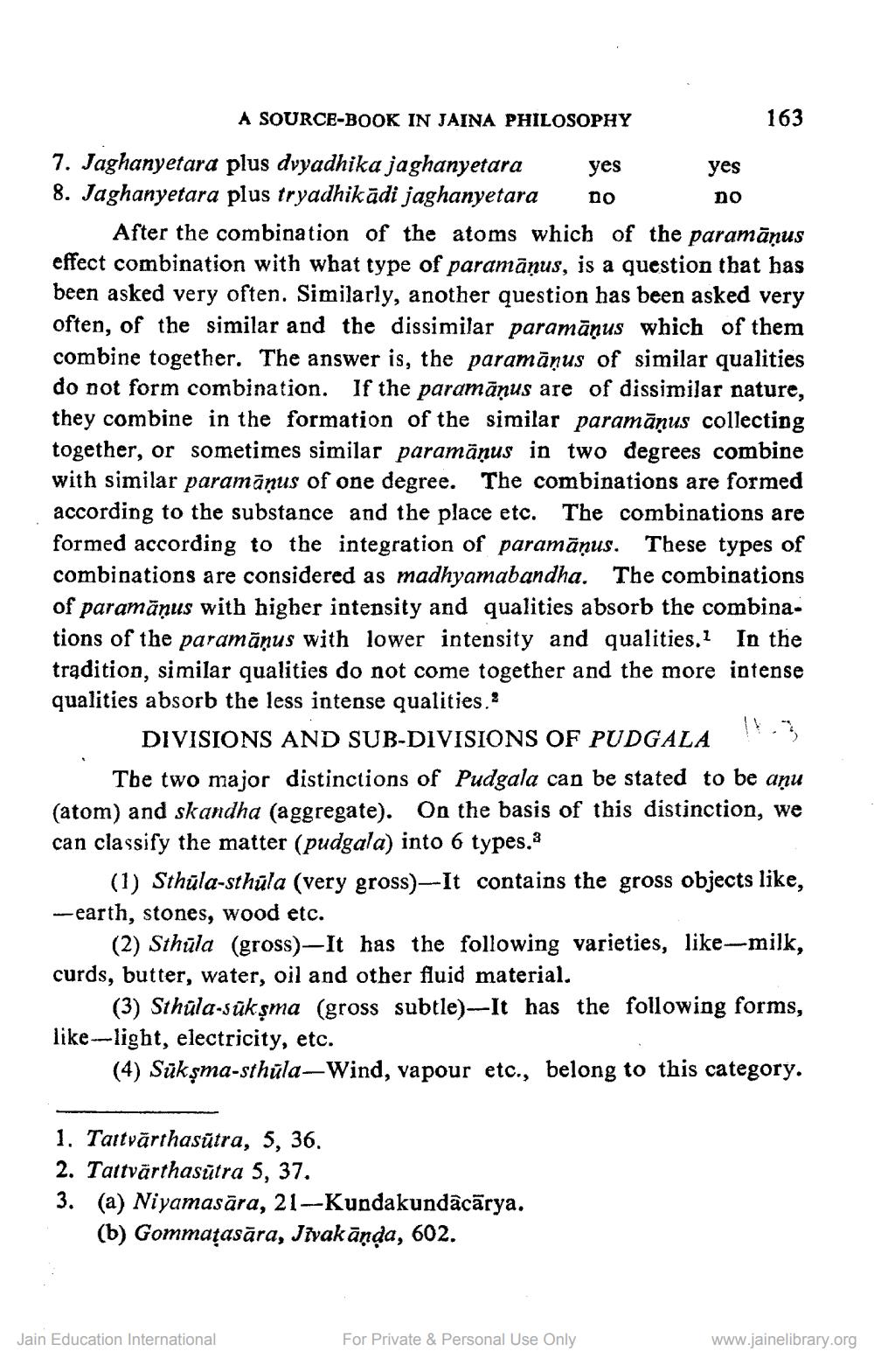________________
no
A SOURCE-BOOK IN JAINA PHILOSOPHY
163 7. Jaghanyetara plus dvyadhika jaghanyetara yes yes 8. Jaghanyetara plus tryadhikādi jaghanyetara no
After the combination of the atoms which of the paramāņus effect combination with what type of paramānus, is a question that has been asked very often. Similarly, another question has been asked very often, of the similar and the dissimilar paramāņus which of them combine together. The answer is, the paramāņus of similar qualities do not form combination. If the paramāņus are of dissimilar nature, they combine in the formation of the similar paramānus collecting together, or sometimes similar paramāņus in two degrees combine with similar paramāņus of one degree. The combinations are formed according to the substance and the place etc. The combinations are formed according to the integration of paramāņus. These types of combinations are considered as madhyamabandha. The combinations of paramāņus with higher intensity and qualities absorb the combinations of the paramāņus with lower intensity and qualities. In the tradition, similar qualities do not come together and the more intense qualities absorb the less intense qualities.
DIVISIONS AND SUB-DIVISIONS OF PUDGALA 5
The two major distinctions of Pudgala can be stated to be aņu (atom) and skandha (aggregate). On the basis of this distinction, we can classify the matter (pudgala) into 6 types.
(1) Sthūla-sthūla (very gross)--It contains the gross objects like, --earth, stones, wood etc.
(2) Sthūla (gross)— It has the following varieties, like-milk, curds, butter, water, oil and other fluid material.
(3) Sthūla-sūkşma (gross subtle)- It has the following forms, like-light, electricity, etc.
(4) Sūkşma-sthūla-Wind, vapour etc., belong to this category.
1. Tattvārthasūtra, 5, 36. 2. Tattvärthasūtra 5, 37. 3. (a) Niyamasāra, 21-Kundakundācārya.
(b) Gommațasāra, Jivakāņda, 602.
Jain Education International
For Private & Personal Use Only
www.jainelibrary.org




